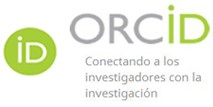Inclusive soccer practices for students with autism spectrum disorders in physical education
DOI:
https://doi.org/10.62697/rmiie.v4i3.226Abstract
The objective of this study was to develop an inclusive teaching strategy, guided by an adapted instructional approach, for teaching soccer to students with autism spectrum disorders in physical education classes. The research was conducted under a positivist paradigm, based on structural-functionalist theory, with a descriptive-explanatory depth, a qualitative-quantitative approach, and an experimental nature in its pre-experimental form. Strategies such as directed passing and visual support were used, which facilitated decision-making and integration into the team game. These results successfully impacted ball reception and control, demonstrating progress in the stability and precision of technical execution. The application of the strategy in a pedagogical context allowed us to consider it as a process aimed at maintaining a dynamic balance between the organization and implementation of teaching and learning related to soccer practices, through a constant search for teaching resources adapted to students with ASD.
Downloads
References
Azcona, M., Manzini, F., & Dorati, J. (2023). Precisiones metodológicas sobre la unidad de análisis y la unidad de observación. Aplicación a la investigación en psicología Instituto de Investigaciones en Psicología (IniPsi). (Ponencia). IV Congreso Internacional de Investigación. La Plata, Argentina.
Baque Reyes, G. R., & Portilla Faican, G. I. (2021). El aprendizaje significativo como estrategia didáctica para la enseñanza – aprendizaje. Pol. Con, 6(58), 75-86. https://polodelconocimiento.com/ojs/index.php/es/article/view/2632
Bernal Alvaro, J., Pilaloa Rivera, C. N., & Maqueira Caraballo, G. de la C. (2024). Adaptaciones Curriculares para la inclusión en la Educación Física de estudiantes con Trastornos del Espectro Autista. Ciencia Digital, 8(1), 6-30. https://doi.org/10.33262/cienciadigital.v8i1.2774
Bustos León, I., Chancusig Gonzales, E., Perez Iribar, G., & Maqueira Caraballo, G. (2024). Estrategia metodológica para la enseñanza-aprendizaje del Fútbol en estudiantes con discapacidad físico motriz. Polo del Conocimiento, 9(3), 315-338. https://polodelconocimiento.com/ojs/index.php/es/article/view/6647
Escobar Villacrés, L., Sánchez López, C., Andrade Albán, J. y Saltos Salazar, L. (2023). El trastorno del espectro autista (tea) y los métodos de enseñanza para niños en el aula de clases. 593 digital Publisher CEIT, 9(1-1), 82 - 98, https://doi.org/10.33386/593dp.2024.1-1.2263
Espinoza Calle, D. F., & Jarrín Navas, S. A. (2025). Los juegos lúdicos como estrategia para la enseñanza de la técnica del Fútbol en la categoría inferior femenina. Pacha. Revista De Estudios Contemporáneos Del Sur Global, 6(18). https://doi.org/10.46652/pacha.v6i18.436
Herrera Gutiérrez, C., & Villafuerte Álvarez, C. A. (2023). Estrategias didácticas en la educación. Horizontes Revista de Investigación en Ciencias de la Educación, 7(28), 758-772. http://www.scielo.org.bo/scielo.php?script=sci_abstract&pid=S2616-79642023000200758
Illescas Medina, F. S., Pauta Granda, A. R., & Rojas Valdés, G. R. (2024).El fútbol adaptado en la clase de Educación Física para estudiantes con discapacidad intelectual. DeporVida. Revista especializada en ciencias de la cultura física y del deporte, 4(62), 109-131 https://www.deporvida.uho.edu.cu/index.php/deporvida/article/view/1038
López Díaz, J. M, Moreno Rodríguez, R., & López Bastías, J. L. (2021). Fútbol como programa deportivo para menores con TEA en educación primaria. Cuadernos de Investigación Educativa, 12(1), 22-33. https://doi.org/10.18861/cied.2021.12.1.3065
Mamani Paredes, F. (2025). Rúbrica: conducción pase recepción y remate. https://www.erubrica.com/rubricas/rubrica-conduccin-pase-recepcin-y-remate-1745615848
Olivares Figueroa, K., Martínez Sánchez, N., & Jardinot Mustelier, L.R. (2021). Estrategia didáctica para la integración intradisciplinar de los contenidos biológicos en la carrera Agronomía. EduSol, 21(76), 16-30, http://scielo.sld.cu/scielo.php?script=sci_arttext&pid=S1729-80912021000300016&lng=es&tlng=es
Peñafiel-Álvarez, J. L., Ochoa-Encalada, S. C., & Heredia-León, D. A. (2020). Estrategias didácticas de la Educación Física para desarrollar la motivación en estudiantes de Educación Escolar. Killkana Social, 4(2), 61–66. https://doi.org/10.26871/killkanasocial.v4i2.615
Pérez Santodomingo, I. (2023). Inclusión en el aula de Educación Física: superando barreras y fomentando la participación de todos. Revista Académica Internacional de Educación Física, 3(3), 01-05. https://dialnet.unirioja.es/descarga/articulo/9143552.pdf
Poma Flores, F., Castillo Armijos, J., Pérez Iribar, G., & Maqueira Caraballo, G., (2024). Estrategias didácticas inclusivas para la enseñanza del futbol a estudiantes con discapacidad intelectual leve. 593 Digital Publisher CEIT, 9(3), 1069-1085, https://doi. org/10.33386/593dp.2024.3.2437
Silva M. A. (2022). Práctica docente III La sala/el aula, espacio del aprender y el enseña. ProFoDI·MC. https://dges-cba.edu.ar/wp/wp-content/uploads/2023/08/IPD_PRACTICA_DOCENTE_-_3er_AN_O_PEI_PEP_2023.pdf
Soto Abanto, S.E. (2018). Variables, dimensiones e indicadores en una tesis. https://tesisciencia.wordpress.com/2018/08/20/tesis-variables-dimensiones-indicadores/
Vázquez Vázquez, T. C., Garcia Herrera, D. G., Ochoa Encalada, S. C., & Erazo Álvarez, J. C. (2020). Estrategias didácticas para trabajar con niños con Trastorno del Espectro Autista (TEA). Revista Arbitrada Interdisciplinaria Koinonía, 5(1), 589–612. https://doi.org/10.35381/r.k.v5i1.799
Downloads
Published
How to Cite
Issue
Section
License
Copyright (c) 2025 Ricardo Alexander Moreira-Guerrero, Rubén Castillejo-Olán, Giceya de la Caridad Maqueira-Caraballo

This work is licensed under a Creative Commons Attribution-NonCommercial-ShareAlike 4.0 International License.
Authors who publish in Revista Mexicana de Investigación e Intervención Educativa (RMIIE), of Universidad Pablo Latapí Sarre agree to the following terms:
1. Copyright
Authors retain unrestricted copyright to their work. Authors grant the journal the right of first publication. To this end, they assign the journal non-exclusive exploitation rights (reproduction, distribution, public communication, and transformation). Authors may enter into additional agreements for the non-exclusive distribution of the version of the work published in the journal, provided that acknowledgment of its initial publication in this journal is given.
© The authors.
2. License
The articles are published in the journal under the Creative Commons Attribution-NonCommercial-ShareAlike 4.0 International License (CC BY-NC-SA 4.0). The terms can be found at: https://creativecommons.org/licenses/by-nc-sa/4.0/deed.en
This license allows:
- Sharing: Copying and redistributing the material in any medium or format.
- Adapting: Remixing, transforming, and building upon the material.
Under the following terms:
- Attribution: You must give appropriate credit, provide a link to the license, and indicate if any changes were made. You may do this in any reasonable manner, but not in any way that suggests the licensor endorses or sponsors your use.
- NonCommercial: You may not use the material for commercial purposes.
- ShareAlike: If you remix, transform, or build upon the material, you must distribute your creation under the same license as the original work.
There are no additional restrictions. You may not apply legal terms or technological measures that legally restrict others from doing anything the license permits.












